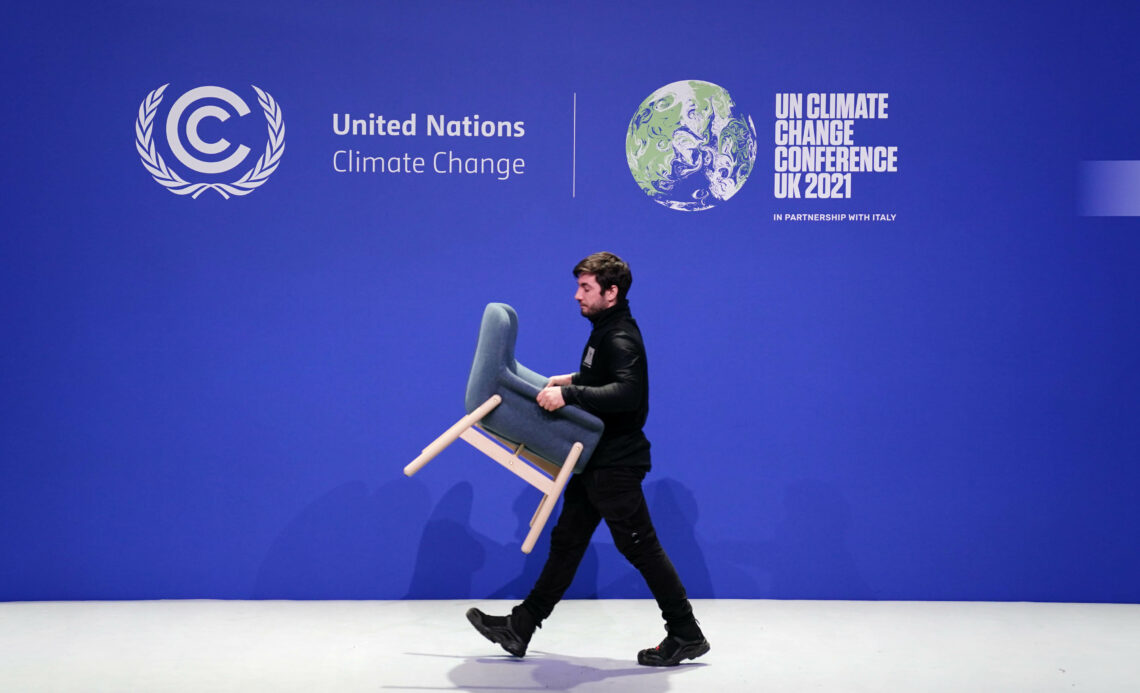Global warming after Glasgow
The COP26 summit made clear that nobody knows what climate regulation can achieve, how much opposing it will cost, nor how to finance these measures. Countries now have a choice between finding ways to pay for the commitments they have made, or backtracking on them.

In a nutshell
- Little came from the COP26 summit
- Global warming may not be as dangerous as some say
- Countries will likely back down from their expensive commitments
At the November 2021 United Nations Climate Change Conference (also known as COP26) in Glasgow, world leaders met to create a road map for slowing global warming over the next 80 years. The idea was to agree on common rules and constraints to reach that goal. As many commentators had anticipated, the Glasgow meeting produced few tangible results.
While many leaders welcomed the opportunity to take stock, satisfy domestic constituencies and show that their countries were complying with the norms of political correctness, little progress has been made over the past six years. Back then, in 2015, 193 countries signed the Paris Agreement, committing to publishing estimates for future CO2 emissions and to informing the public about their plans to reduce them to zero by 2050. Those who had hoped to engage in centralized, global policymaking were disappointed.
No doomsday
One piece of good news that came out of the conference was that the catastrophic predictions put forward by many agencies (including the UN’s Intergovernmental Panel on Climate Change) and publicized by the media have lost much of their credibility. It is now clear that this century, global temperatures will not rise by 5.8 degrees Celsius and sea levels will not rise by 3 meters. A much more optimistic consensus is now building.
History shows that humans were able to adapt successfully to rapid climate changes in the past.
If nothing is done, it is likely that by the end of this century, global temperatures will rise by no more than 2.7 degrees above preindustrial levels, while sea levels will rise by some 3 millimeters each year (24 cm by the end of the century). These are small figures compared with some of the fluctuations throughout Earth’s history. All this was known well before the Glasgow meeting, but now the media seems more willing to listen.
Global warming is nothing new, and history shows that humans were able to adapt successfully to major, rapid climate changes in the past, despite primitive technology and low levels of wealth. In earlier centuries, cooling, not warming, was the culprit. During the Little Ice Age, which some scientists define as having lasted from about 1300 to 1850, temperatures in Europe fell significantly. For example, they reached -30 degrees Celsius in the Po Valley during one winter in the early 1400s. The harbors in Venice and Marseille frequently froze over, and people died in vast numbers due to the terrible weather conditions and poor harvests.
Wishful thinking
Regardless of what they claim, policymakers seem to realize that intermediate targets based on zero CO2 emissions by 2050 are a pipe dream. Today, fossils fuels meet 80 percent of the world’s energy needs; intermittent renewables are far from viable substitutes. At most, intermittent renewables can satisfy 50 percent of our electric power needs by 2050, but on average, electric power represents just 20 percent of a country’s total energy needs. What about the rest?
Nuclear power technology is more promising, but COP26 unveiled no grand plans in this direction. Moreover, the West has now learned that all efforts to oppose climate change come to little unless developing countries do their part. For example, since Europe accounts for about 10 percent of global CO2 emissions, Europe-only carbon neutrality is nearly irrelevant.

Crucially, nobody really knows how much opposing climate change will cost. At the Glasgow meeting, the working hypothesis was at least $131 trillion over the next 30 years – the previous estimate was less than 100 trillion. Of course, it is also true that it is hard to judge what the cost of simply adapting to climate change would be.
Estimates by Nobel Prize winner William Nordhaus suggest that in the absence of new policy measures, climate change would reduce world GDP by just three or four percent by the end of this century. In a similar vein, economist Bjorn Lomborg has used Mr. Nordhaus’s model to make predictions in the very long run (500 years): doing nothing will cost us about $140 trillion (damages provoked by climate change), while cutting the damage to $40 trillion would require policy costs of some $177 trillion.
Put differently, drastic policies may be a bad deal for future generations. This may explain why world leaders have indeed confirmed their commitment to engaging in large, global public expenditure programs in the name of slowing climate change, even though its main causes are still unclear; but have not gone beyond vaguely framed statements about how those resources would be spent.
Glasgow was eyewash, and the picture remains muddled.
So, on one hand, industrialized countries seem willing to tolerate large budget deficits, ostensibly to ensure that future generations enjoy a temperature no more than one degree warmer than today’s. On the other hand, they must answer the demands of developing countries (including China and India) that claim rich economies should compensate the poor ones.
These governments believe that the cost of fighting climate change should not be based on countries’ share of the CO2 emissions, but on their gross domestic product (GDP) per capita. In 2015, developed countries promised annual transfers equivalent to $100 billion, but the prospective recipients no longer consider this adequate. The latest request amounts to $1.3 trillion – annually.
COP26’s lessons
Glasgow was eyewash, and the picture remains muddled. Yet, a few lessons can be drawn. First, if Western nations were to really follow their words up with deeds, then they would need a massive amount of resources over the next decades to finance what is essentially a mega-project that will not achieve carbon neutrality by the end of the century, let alone 2050. It will also not slow global warming to much less than would have occurred if we were to simply let nature take its course.
Second, enormous money transfers to encourage and enhance clean energy and sustainability will make big business and high-tech industries happy. Small and medium-sized enterprises do not have the skills or resources to lobby for and obtain the public expenditure that will subsidize these changes. They will suffer from inadequate funding and more stringent regulatory corsets.
The developing world regards developed countries as both the main culprit and the cash cow.
Third, the West is now trapped in a blind alley: the developing world regards developed countries as both the main culprit and the cash cow. China, for its part, can boast about its ability to defend the poor of the world against the rich.
Scenarios
Two scenarios follow. The West’s strategy for public finances is to let inflation erode real indebtedness and rely on central banks to keep nominal interest rates close to zero. This plan is feasible (on paper) if these countries issue no new debt and significantly slow their rate of money printing. The plan will not be possible, however, if public expenditure rises to finance climate-change programs and bribe developing countries into aiming for carbon neutrality.
Engaging in climate change mitigation efforts means money printing and inflation for decades. Tensions will rise following the economic difficulties in the West, possibly accompanied by a new season of fragile cooperation between China and the United States.
Another, more likely scenario would see countries backtrack and eschew the commitments they made at COP26, just as they did with the 2015 Paris Agreement. This will imply that the purpose and terms of the war on climate change will morph into something different. In Europe, for example, this could take the form of merging plans for fighting climate change with the NextGenerationEU program, which already promotes several green energy initiatives and costs less than 1 trillion euros. Strategies for battling global warming would be reduced to freezing CO2 emissions at current levels, committing to strict monitoring, acquiring better scientific knowledge, developing a friendlier approach to nuclear power and, possibly, financing research into new technologies.
Clear, enforceable rules and deadlines will be relegated to polite wishful thinking. There will be winners and losers if this second scenario comes to pass. Companies that in recent years bet on rigorous new standards and lavish government subsidies will suffer, while emerging markets that had hoped to access new sources of largesse will be disappointed. By contrast, taxpayers – including those who fear the “tax” that is inflation – will breathe a sigh of relief.







